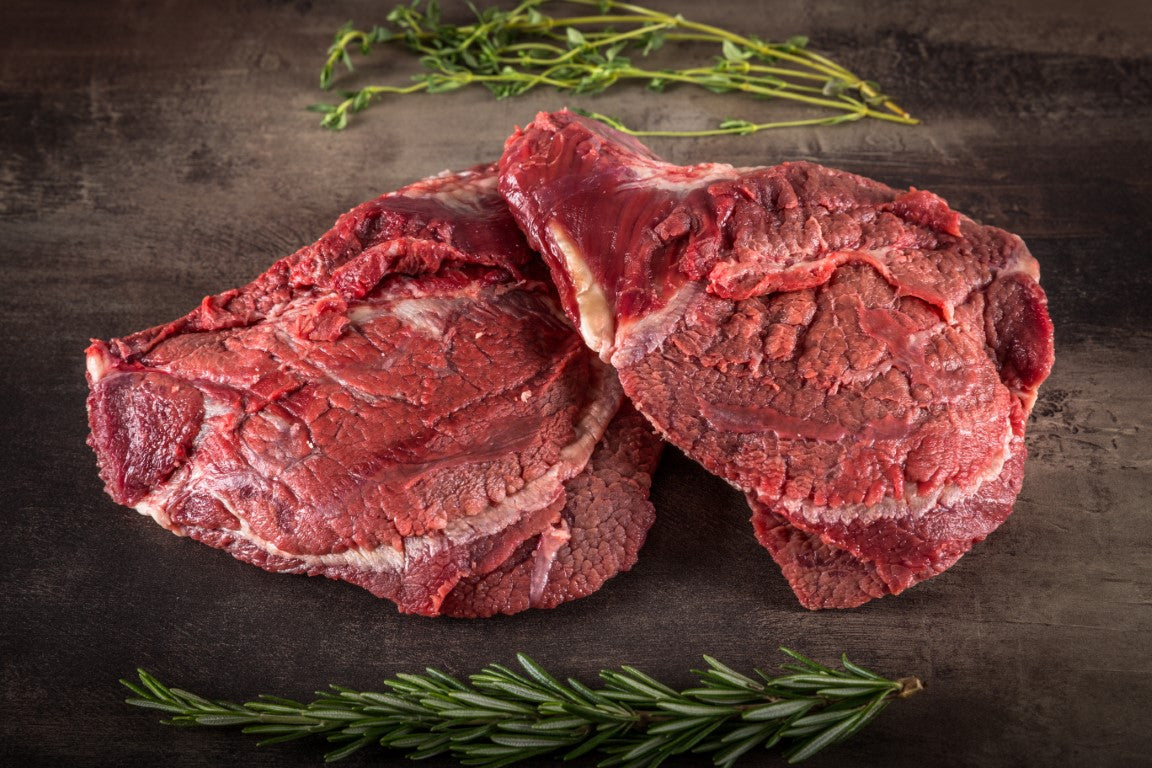Ox cheeks from the Black Forest
Ox cheeks were out of fashion for a long time, but in recent years they've enjoyed a well-deserved comeback. Their fine marbling and heavy use make them highly aromatic . The cheeks are rich in collagen, but when braised properly, they become tender as butter . We pre-trimmed the ox cheeks, although occasional light finishing may be necessary.
About the Cut
The ox cheeks , also known as beef cheeks , are removed from the bone above the lower jaw. They are highly utilized muscles, making them ideal for braising. The coarse grain and proper braising result in this braised cut that is particularly juicy and tender.
Raising our cattle
All beef you buy from us comes exclusively from our own livestock and those of our partners. All farms are located within the vicinity of our butcher shop, with transport distances of no more than 60 km. The animals are raised exclusively on our own farm feed .
Our short transport routes protect both the livestock and the environment. We transport the animals a maximum of 60 km from the farm to our butcher shop, and a gentle, stress-free slaughter process right on our premises is essential for the quality of the meat.
Our ox cheek recipe
When prepared correctly, beef cheeks are a true delight. Time is of the essence to make them buttery tender. Our recipe serves 4 people.
Ingredients: 1 kg ox cheeks, 1 bottle of red wine (dry), 0.5 l port wine, 200 g celery, 50 g leek, 50 g carrots, 1 large onion, 2 tbsp tomato paste, 1 ½ beef broth (lightly salted), 3 tbsp balsamic vinegar
Preparation:
- Peel and dice the celery, onion, and carrots. Slice the leek into thin rings.
- Heat oil in a large roasting pan and sear the cheeks on all sides. Add the vegetables and roast them as well. Once the vegetables have browned, add 1 tablespoon of tomato paste and roast briefly.
- Deglaze with about 1/3 of the red and port wine and reduce. Repeat this process 2-3 times.
- Add the stock until the cheeks are almost covered. Bring to a boil and simmer over low heat for about 3.5 hours. Add more stock as needed and check periodically to see if the cheeks are tender.
- Once the cheeks are ready, remove them and keep them warm in the oven.
- Strain the stock through a sieve and reduce to about one-third. Add the vegetables again and puree.
- Strain the sauce through a fine sieve again. In an empty saucepan, roast 1 tablespoon of tomato paste, deglaze with balsamic vinegar, and top up with the stock. Thicken the sauce if necessary.
- Serve the cheeks with the sauce. Side dishes such as mashed potatoes, potato gratin, dumplings, or noodles go perfectly with them.





 Aus eigenem & Partner Viehbestand
Aus eigenem & Partner Viehbestand Dienstags und Donnerstags Versandtag
Dienstags und Donnerstags Versandtag

